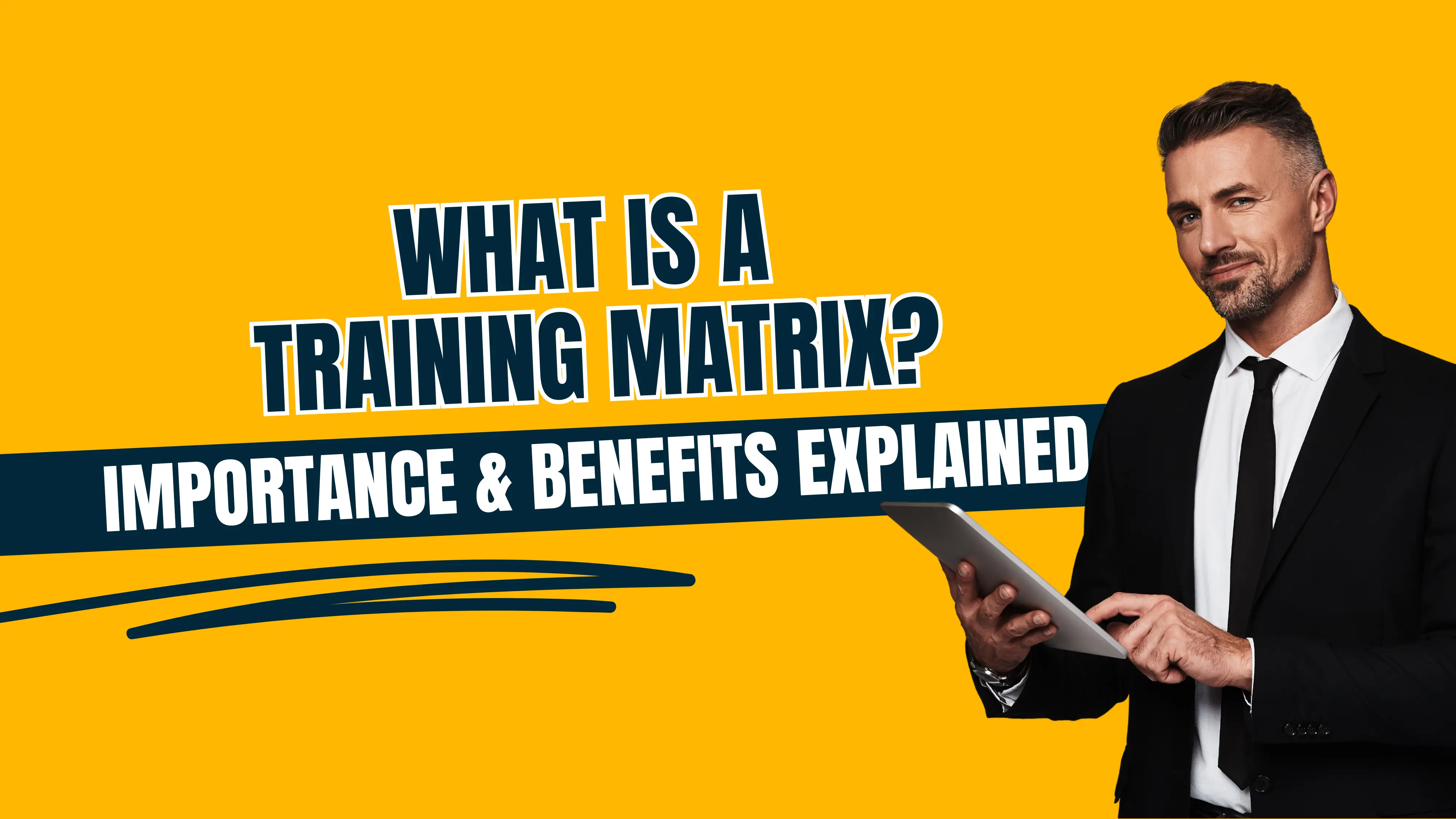Companies that invest in upskilling their employees have 24% higher profit margins than those companies that don’t. Studies suggest that regular training instills candidates with efficiency and motivation to be more productive.
In fact, when the Learning & Development departments work towards upskilling their employees, it results in a 10% increase in the overall productivity and efficiency of the employees.
However, what companies forget before training their employees is that they should only be trained when required and in the skills that are actually helpful in achieving organizational goals. Undirected training is not only resource-exhaustive but also mostly futile. Therefore, conducting a training needs analysis or TNA is especially important before conducting the training of employees.
What is Training Needs Analysis?
Training needs analysis is the process of identifying the gap between the present and required skills, knowledge, and expertise of employees working with the organization. Also called the training needs assessment, the process helps gather information about the current skill set of employees and those that may be required in the near future to achieve the desired objectives of the organization.
Training needs analysis identifies the areas where the Learning and Development department of your company needs to focus in order to improve the efficiency of your employees and result in successful accomplishments of the objectives of the company.
It is easy to identify if your company needs to conduct a training needs analysis. If you see signs such as:
- your sales team giving you lower-than-expected revenue month-on-month
- your end users being unhappy with the product for months in a line
- change in the technology is becoming a hindrance in the performance of certain employees
Then probably it’s time to upskill your staff for better results.
Conversely, these issues might also arise due to other factors. For example, the revenue might seem lower than expected because of unrealistic targets or your customers might be unhappy because the product designing strategy doesn’t fall in line with the customer requirements.
Therefore, the organizational strategic teams must intervene and decide on the reasons for these problems before jumping to any conclusions.

Why Is It Important to Do a Training Needs Analysis?
When the strategic teams are convinced that the current organizational problems are the result of the lack of skills and knowledge in the workforce, it becomes important to conduct a training needs analysis. It helps in a lot of ways, listed below -
Identifying Gaps
Every organization has one or the other issues that might become an obstacle in achieving the goals of the company. Using a TNA, you can readily identify whether these issues stem from discrepancies between the skills and knowledge required for your objectives and what your employees currently possess.
Moreover, when TNA is conducted timely, you can easily identify these gaps before they become a major problem for the company.
👉 Read more: What is a Skills Gap: How to Identify & Address it?
Planning
Every organization has certain plans for the next year, such as budgets, training needs, targets, and business objectives. TNA aids in planning regular training for your workforce in line with your budgets, targets, and business objectives.
Thinking Out of the Box
Conducting regular training needs assessments helps you identify skills that you may not have initially considered important when recruiting or upskilling. Thus, as an HR professional, you start thinking out of the box through TNAs.
Targeting the Right Employees
Planning training to upskill or reskill an entire team might be time and money-draining. That’s because some team members might not need those skills or might already be experts in them.
Instead, when such training is conducted after a thorough TNA, it helps you target the right employees to train on the right skills, saving a lot of time, money, and effort.
What are Training Needs Analysis Levels?
Depending on the goals and objectives of your organization and the skills and knowledge required to achieve them, there can be different levels of training needs analysis for your company.

Organizational Level Training Needs Analysis
Organizational-level TNA caters to the training needs of the whole organization. It addresses problems, shortcomings, and issues of the company as a whole and targets to improve the company’s current skills and competencies.
Organizational-level TNA is designed to consider the bigger factors like changes in political, economic, social, or demographical factors.
For example, suppose the taxation system of a country changes. In that case, every individual and department in a company needs to be trained to adapt to the new taxation system of the country.
Group Level Training Needs Analysis
This level of TNA caters to a group, team, or business unit in a company. It is generally required to upskill a team due to a new project or business requirement.
Individual-Level Training Needs Analysis
When there are observational skill gaps or discrepancies in the expertise required to fulfill an individual’s duties, there is a need for individual-level TNA.
The need for individual-level TNA is usually signaled when individuals repeatedly fail to accomplish their KRAs. It also helps find which skills need to be upgraded and what are the potential ways to accomplish it.
How Do You Conduct a Training Needs Analysis?
For the training needs analysis to be effective and efficient, it must be conducted following a standardized process.
A standard training needs analysis can be broken into four steps, starting from defining your organizational goals to preparing a training plan.
Outline Your Organizational Goals
To conduct a training needs analysis, you should first define the objectives of your organization. You need to determine what exactly you expect to achieve through this TNA.
It might be measurable goals such as revenue and profits, or immeasurable goals such as improving organizational culture and work-life balance of your employees.
You might also want to check if there are any pain points that the senior managers of your organization are facing in carrying out their responsibilities.
If the company is losing its innovative capabilities, is not making the target revenue, is not able to meet the desired market share, or the management wants to enhance every employee’s capabilities to meet future organizational demands, then probably it’s time to conduct a TNA.
You might also want to analyze things like -
- What are your organization’s long-term objectives?
- Do your employees have it in them to meet these goals?
- What are the changes that your employees or business units need to accomplish these goals?
- Do all the different departments or individuals meet their respective KRAs and KPIs?
Identify the Required Skills and Knowledge
The next step in the process would be to identify the specific skills that your employees and teams need to accomplish the objectives outlined in the previous step.
In order to instill the right kind of skills and competencies in your employees, it’s crucial that you put in a lot of effort in clearly determining the specific skills required and the employees who need these skills to accomplish these goals.
Also, keep in mind that not every department will need the same set of skills to be able to work towards achieving the organizational targets.
For example, to double the revenue target within a year, the skills required by the product designing department, the manufacturing department, the marketing department, the sales department, the finance department, and the logistics department are all different.
Therefore, clearly define the skillsets required by each business unit separately to make the process seamless and effective.
Determine the Issues and Gaps
The third step in conducting a training need analysis is to conduct a skills assessment test of your employees. Through skill assessment tests, you can easily quantify both the hard and soft skills of your employees and evaluate their current situation. You can also rank your employees if you want to assess who needs what level of training.
By using skills assessment softwares like WeCP, you create skill assessments for your employees and evaluate their skills on all kinds of coding languages and technologies. It can also help you check the soft skills of your employees, such as their problem-solving and decision-making abilities.
At the end, you can get an evaluation report that clearly indicates what your employees are good at and which skills have room for improvement.
Such skill assessments help you define the gaps between the required and the actual skills and competencies that your employees have. Once you are aware of these skill gaps, you can simply proceed to prepare the training plan for your employees.
👉 Read more: How WeCP helped Infosys Evaluate 100k+ Super Coders

Prepare a Training Plan
At the end comes the step to prepare the training plan for your employees. With the help of the pre-defined skill gaps, you can easily prepare for the training content. And, apart from the content, you will also have to define the timelines and expected outcomes.
Once the training of your employees is complete, look for ways that can help you track their progress. This can be done either by using the skill assessment tests again or through data mining by evaluating the measurable and non-measurable outcomes against the desired outcomes that were expected from the whole process.
Conclusion
Every organization needs to conduct training needs analysis regularly to ensure that the organization and its teams and employees are competent enough to achieve the organizational objectives. Skill assessment tools are quite helpful in conducting these analyses, thanks to their seamless designs, accessibility, and ease of use.
WeCP offers skill assessments for all your employees catering to soft skills and any IT-related hard skills. It not only creates the test but also evaluates your employees and generates a cumulative report that makes the whole process extremely simple. With such ease of use, you can reduce all your manual effort and make the process quick and automated.
Want to know more on how WeCP can help you out? Try WeCP for free or Schedule a Call with us.



.png)








.svg)